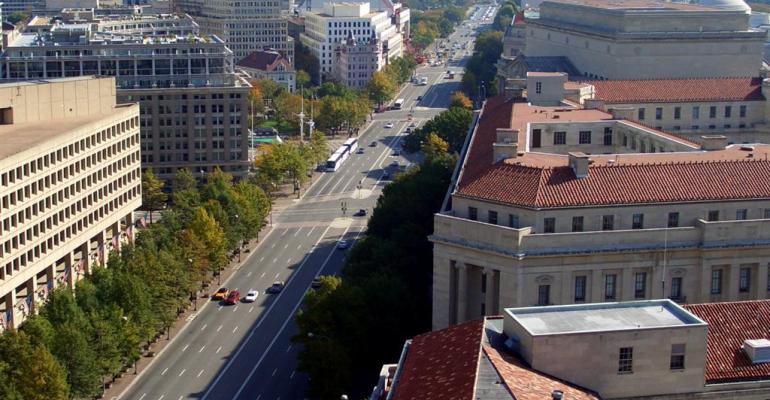The fortunes of office investors in Washington, D.C., may be about to turn positive as a lack of development combines with an improving economy and Millenials moving into the city.
The market experienced a huge surge in office leasing between 2003 and 2006, after the formation of the Department of Homeland Security, and before the recession had been competing with New York City in property fundamentals and tenant demand for space. But subsequent government cutbacks, layoffs and consolidation pushed back that success and coincided with an unfortunate surge in suburban completions.
Today, the vacancy rate for the entire Washington D.C. region is more than 17 percent, with much of the emptiness due to vacated space in the suburbs. Owners are unloading suburban properties, such as First Potomac Realty Trust’s $60.3 million sale of its Richmond, Virginia portfolio. Nearer the capital, the vacancy rate is about 11 percent, and the unemployment rate is at 7.8 percent, significantly higher than the national average of 5.5 percent, according to the U.S. Bureau of Labor Statistics.
Kurt Stout, executive vice president with Collier’s government solutions division, says a freeze on office expansion in 2012 by the Department of Management and Budget curtailed any hopes of the market joining the country in recovery.
“All offices under the General Services Administration stopped any growth, and many signed only short-term leases following the recession,” Stout says. “Now they are being asked to consolidate more. There’s no question the government will keep getting smaller in terms of office space.”
Space occupied by the GSA had once been popular with investors, he says, as the government was the best credit tenant, and had traditionally signed long term leases. After the freeze, there’s been a push to consolidate spread-out offices into one building, or even move workers to an existing building owned by the federal government, Stout says. A large portion of the GSA moves have resulted in tenants taking considerably less space than they left behind. Those losses forced owners into lease terms as short as three years. “Without long terms, you can have the best tenant in the world, [the space] still loses its value.”
Most experts believe that while vacancy will likely increase this year, demand by private tenants will eventually outgrow supply, as the current construction pipeline constitutes only about 1.6 percent of the existing building stock. CBRE’s recently released North America Investor Intentions Survey shows D.C. moving up to the number eight spot on the list of the most attractive U.S. investment markets.
Washington’s urban core is drawing the new Millennial workers, and employers are following. Scott Homa, senior vice president of research in JLL’s Washington, D.C. office, said in a first quarter report that more than 92 percent of all leasing activity in the first quarter was focused in buildings that were within half a mile from an existing or planned Metro station. The leases include deals signed by the American Diabetes Foundation and Noblis.
“Given the growth of the Millennial generation in urban-centric locations, Metro accessibility is quickly becoming a key requirement for large leasing decisions,” he said.
The good news for the year, according to Stout, is that there’s likely to be a lot of leasing activity this year as the short leases come due. There’s a huge pileup of lease, about 25 percent that expire by 2017, that could benefit owners of high quality, modern buildings that already have GSA tenants. Stout says the negotiations will be for longer leases.
“The government favors going into buildings where it has experience, and where it can point to utility savings due to efficiency and sustainability,” Stout says. “The D.C. investment environment is pretty good, you just have to be careful. It is not an environment for passivity.”

